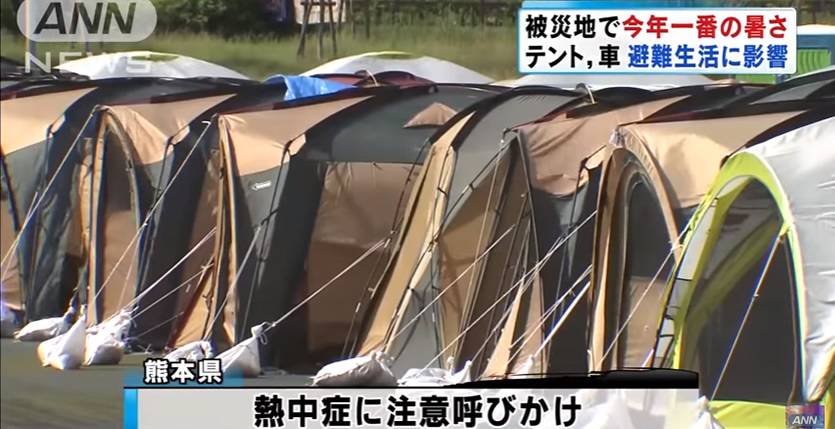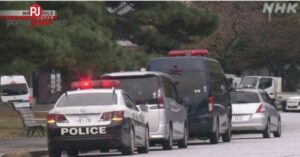Since April 14, more than 1,400 temblors that could be felt by humans occurred, damaging more than 82,000 buildings in the region.
Despite some signs of recovery including resumption of railway and expressway operations, more than 10,000 people were still taking refuge at shelters, as Saturday marked one month after a strong earthquake rocked the southwestern Japan main island of Kyushu.
Magnitude 6.5 and 7.3 quakes hit Kumamoto Prefecture on April 14 and 16, respectively, leaving 49 people dead and one person unaccounted for. The number of evacuees peaked at about 200,000 in Kumamoto and nearby Oita Prefecture.
In Kumamoto, 19 people were believed to have died from illness due to stress, fatigue and other quake-related causes after being displaced by quakes.
The Kumamoto prefectural government said Tuesday that 50 people needed to be hospitalized after developing deep vein thrombosis, known as economy class syndrome, in which blood clots develop due to prolonged inactivity including staying in cars.
The number of evacuation centers in Kumamoto fell from 855 as of April 17 to 244. But many residents were still spending nights in cars and tents, fearing aftershocks.
Nearly 80 percent of 100 evacuees in Kumamoto said they cannot return home as their houses were destroyed, according to a Kyodo News survey conducted between Tuesday and Thursday.
Major transportation services have almost returned to normal in the region, with the restart of bullet train operations on the entire Kyushu Shinkansen Line on April 27. But a section of one of the local lines operated by Kyushu Railway Co. remains out of service.
The entire expressway network in the Kyushu region was restored Monday, after the last remaining section that had been closed in Oita Prefecture reopened.
In the agriculture sector, the total damage caused by a series of quakes in seven prefectures of Kyushu was estimated at 135.8 billion yen ($1.25 billion), according to the farm ministry and local authorities. Kyushu is known for its wide variety of farm products such as rice.
In a positive sign, the central government will carry out reconstruction work on behalf of affected local municipalities under an ordinance implemented Friday. In order to speed up rebuilding efforts, the government will undertake large-scale restoration work such as road repairs when requested by local governments.
The government also plans to have a 778 billion yen fiscal 2016 supplementary budget enacted next Tuesday to help quake victims and promote the disposal of rubble in the affected areas.
Source: Japan Today Image: ANN

















Join the Conversation